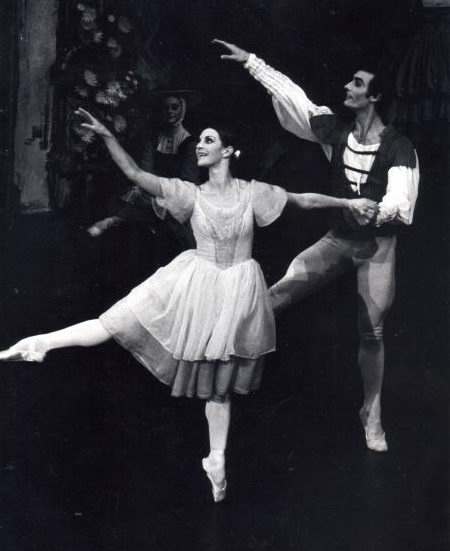The first part of Peggy!, the Australian Ballet’s tribute to the company’s founding director Dame Peggy van Praagh, may well have delighted her. Mark Annear’s Birthday Celebration, a work made originally to celebrate the 40th anniversary of the Australian Ballet School in 2004, was a joyous offering. Dame Peggy, who cared deeply about teaching and the training of dancers, would I think have been delighted to see that the Australian Ballet School, whose founding she fostered, is alive and well under its present director, Marilyn Rowe. The work showcased students of the school, including some very young children. Almost without exception their dancing was filled with the joy of movement—so refreshing.
The rest was not so exciting. A series of short excerpts from various ballets—van Praagh’s Garland Dance from the 1973 production of The Sleeping Beauty; an Act I pas de deux from Giselle, inserted into the ‘standard’ production by van Praagh in 1973; and extracts from Frederick Ashton’s Cinderella—suffered from lack of context and from ordinary dancing. The Giselle pas de deux, for example, is a beautiful addition to a great Romantic classic. As I mentioned in a much earlier post, dramatically it serves to establish early on, and in more depth than is usual in other productions, the relationship between Giselle and Albrecht. To perform it in isolation requires much more than Kirsty Martin and Ty King-Wall were able to give. Their interpretation was bland in my opinion. I also missed the choreographic delights I recall from the performance of this pas de deux in the Australian Ballet’s 2001 production—its Cecchetti-inspired use of épaulement and its light as a feather jumps for example. They just weren’t there.
The final work on the program, Antony Tudor’s Gala Performance, in which van Praagh herself once played the leading role of the Russian Ballerina, lacked the satirical subtlety that I was hoping to see. Like most of the ‘comedy’ staged recently by the Australian Ballet the roles were exaggerated making them a travesty of what was originally intended. However, if we are talking about roles suiting particular dancers, as we were in the comments on Coppélia recently, I have to say that Reiko Hombo was well suited to the role of the French dancer. She was properly bubbly and flighty.
In many respects in this program I preferred the ancillary material to the dancing. The archival film footage and interviews with those who had been close to Dame Peggy, which preceded each major segment on the program, gave interesting insights into the way Dame Peggy worked. And the small exhibition of photos and other items, which was set up in the foyer of Melbourne’s State Theatre, captured some key moments in Dame Peggy’s life. It’s a shame it wasn’t given a better space but it attracted a lot of interest both before and after the show.
Michelle Potter, 30 June 2010
